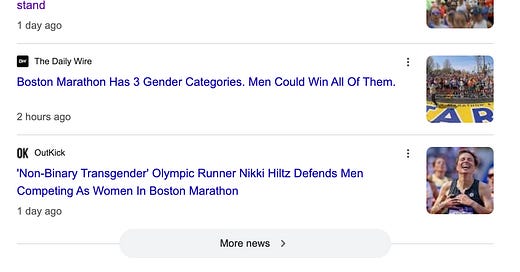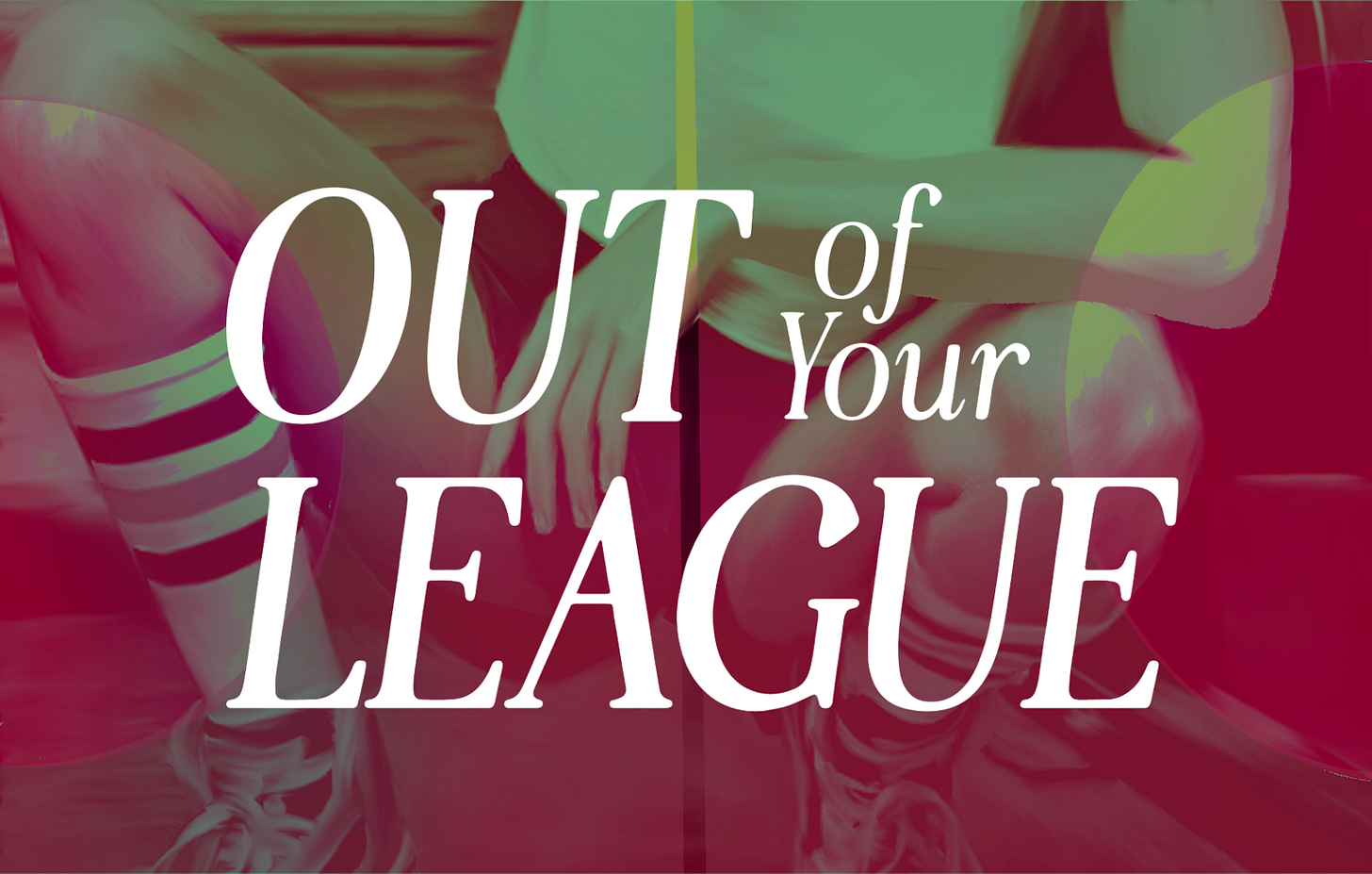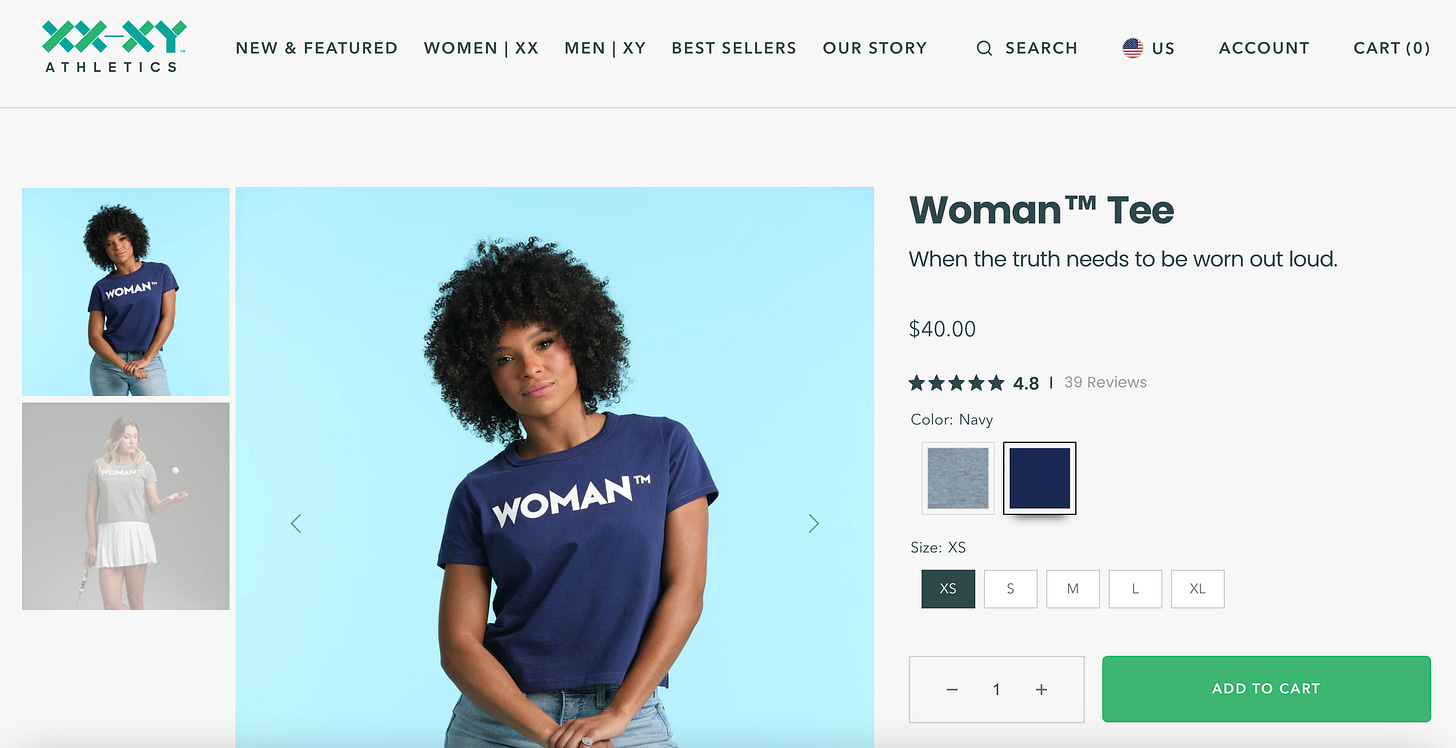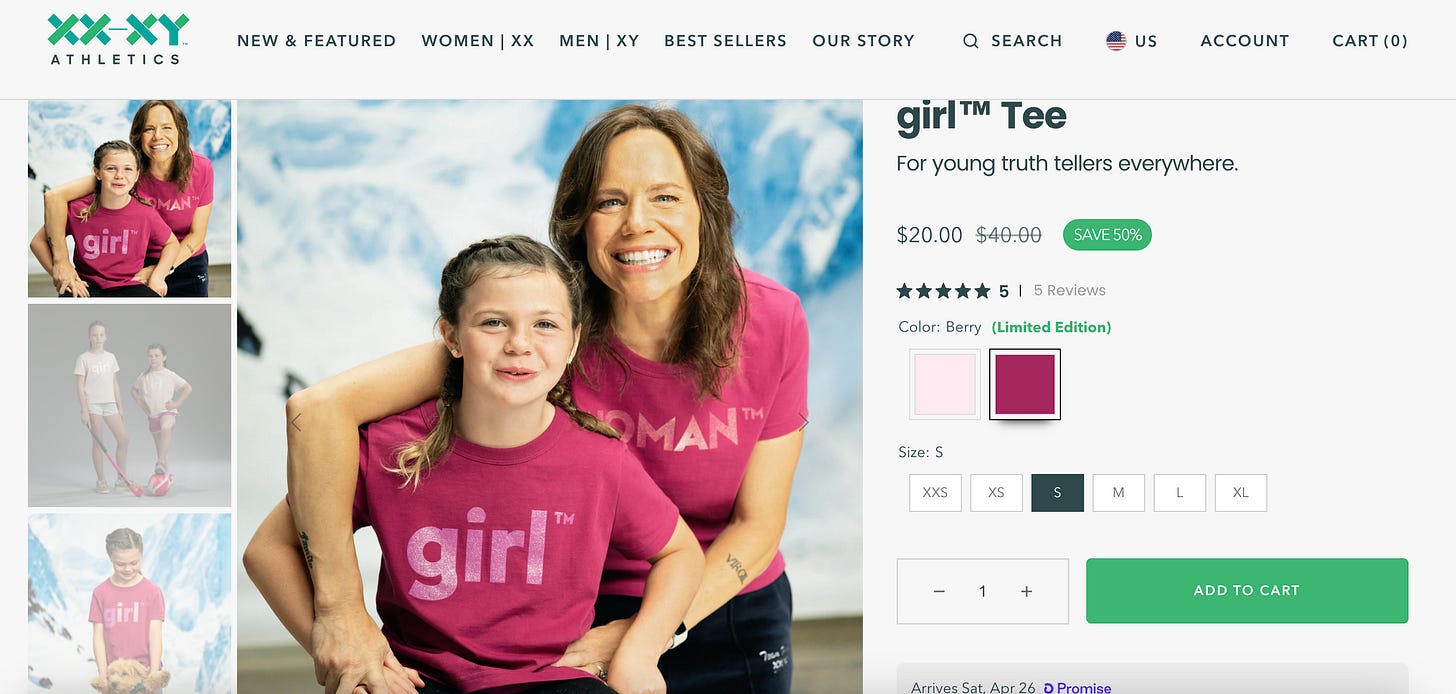the boston marathon: a case study in an anti-trans media hysteria
or: how one group controlled an entire discourse
Thanks for being here! Below, a deep dive into the anatomy of an anti-trans smear campaign.
I am a full-time freelance sports writer. I decided to make this post free because I think it’s important, but a lot of hours of research went into it. Paid subscriptions to this newsletter allow me to dedicate more time to this work. Paid subscribers also have access to a Discord server where we chat queer women’s sports, as well as events like our upcoming book club meeting with Katie Barnes, the author of FAIR PLAY: How Sports Shape the Gender Debate.
You can upgrade here:
Yesterday was Patriot’s Day in Massachusetts—a state-wide holiday known colloquially as Marathon Monday. Yes, here in Massachusetts, everyone gets off work and school for the Boston Marathon.
The marathon is a big deal here in eastern Massachusetts but it’s also one of the most famous marathons in the world. A lot of people pay attention to what happens in this race. This year, the Boston Marathon made headlines for what could have been the right reason but quickly turned into the wrong one. And as I tried to dig deeper into the media narrative that has sprung up around this year’s race, I realized that this was actually a story about media literacy and a small group’s ability to manipulate the discourse by knowing the tools to do so.
Maybe you’ve heard that a transgender woman qualified for the women’s division of the 2025 Boston Marathon, and that she was allowed to compete. The Boston Marathon has had an inclusive gender policy since 2018 and added a non-binary division in 2023. I am not going to name the woman in question here because I could find no legitimate news sources to confirm that the Boston Marathon knowingly allowed a trans woman to run in their women’s division this year, or even that this woman is trans. The only news available around the event is from right-wing sources.
I have, however, looked up the results from the allegedly trans woman’s race today. She finished 632 in the women’s age 55-59 division. Among all runners across all groups in the women’s division, she finished 8,945. The qualifying time for the women’s division of the Boston Marathon is 4 hours and 5 minutes; this runner qualified with a time of 4 hours and 1 minute.
That means that there were 8,944 women who beat her yesterday. People who are angry about this maybe should just be better at running, I don’t know. Stay mad!
But even aside from that, protesting this one woman completely misses the point of how marathoning works. “When you sign up for a Marathon, as a normal human person, not an elite or professional, you can literally pick any gender category you want,” explains
, the author of Better Faster Farther: How Running Changed Everything We Know About Women. “It has no bearing on what wave you start in or what your ultimate time will be. There’s also a vast overlap between men and women and non-binary runners in the general marathon field and their finishing times.”Now, let’s look at the headlines.
Let’s look closer at that first one, from the New York Post, the one that says a trans runner “trample[d]” women athletes. I will first note that the use of the word “trample” is intentional—it’s a way that anti-trans activists make trans women seem monstrous and dangerous, by using terms that imply they are a threat to their cis women competitors. But secondly, the byline gives the entire game away: it’s written by a woman named Jennifer Sey.
Who is Jennifer Sey, you may be asking? Jennifer Sey is the founder of XX-XY Athletics, a transphobic apparel company that makes shirts like the one Brooke Slusser has been photographed in (Slusser was the captain of the San Jose State women’s volleyball team and she filed a lawsuit to prevent her own teammate from playing alongside her because Slusser believed that teammate was a trans woman1). According to the San Francisco Chronicle, Sey has sent free shirts to people who are fighting legal battles against trans girls in sport, meaning that all “news coverage is essentially free advertising for the brand.” Noted fifth place swimmer Riley Gaines is also a fan of the apparel company.
Sey is also known for offering to reward cis women who drop out of competitions in protest if there are trans women allowed to compete alongside them. Back in December, she offered to give the XX-XY Athletics “Courage Wins” Award to the first three women to drop out of the Boston Marathon due to a trans woman’s participation.
According to the XX-XY Athletics website, the “Courage Wins” award program is “a donation-directed program for brave female athletes who speak up, and stand up for women’s sports.” It aims to “help take ‘monetary cancellation’ off the table, and make doing the right thing a little bit easier.” Essentially, her organization raises money in order to offer financial incentives to cis women and girls to refuse to compete against trans women and girls.
Now, remember that third headline from the above screenshot, in which Outkick says that Olympic runner Nikki Hiltz (who is non-binary) defends “men competing as women?” Hiltz posted a video to their social media in which they stitch another woman saying she will drop out of the Boston Marathon if a trans woman runs, and Hiltz provided perspective on why trans women should be able to compete. Their caption read:
“54 years ago cis women weren’t allowed to run the Boston marathon. Now a new gender minority just wants the chance to race. We have an opportunity to break the cycle here-not continuing to enforce it. Let’s protect and celebrate trans people!! Because they earned their spot on that start line just like everyone else!!”
The woman in the video Hiltz stitched is named Natalie Daniels, “a former NCAA Division III distance runner, a 17-time marathoner, a five-time marathon champion, [and] a new mom,” who recorded this video as part of her appearance on The Patchwork Podcast.
Clicking on the link in the bio for the Patchwork Podcast’s TikTok page brings me to a subscription page for The Daily Wire+, which means that this podcast is part of the conservative media brand’s podcast network (remember that second headline in the screenshot above?).
And look at the shirt Daniels is wearing in her video:
It appears to be one of the shirts from Sey’s XX-XY Athletics clothing brand.
You can see that this shirt did, at one point, come in the color that Daniels is wearing in her video (there was also a matching version for girls):
Going to the XX-XY Athletics YouTube page confirms it. That’s where the original video of this interview lives:
That means that every major headline about the outrage over one potentially trans runner at the Boston Marathon can be traced back to one person: Jennifer Sey. Her organization managed to control an entire news cycle.
Oh, and Daniels? Who claimed this trans woman was a threat to her own marathon? She finished 110th among all women yesterday—coming in 97th in the women’s 18-29 division. Not only did she not even come close to medaling, she finished nearly an hour and a half ahead of the woman she complained about having an unfair advantage. She ran a sub-3 hour marathon and is complaining about a masters athlete! Babe! How are you not embarrassed??
What makes Jennifer Sey’s tactics so insidious?
Sey famously rejected $1 million in severance pay after she resigned from her position as a top executive at Levi Strauss so that she could speak freely against COVID precautions. And like many other women who campaign against trans women playing sports, she has spoken out about abuses—including sexual abuse like that perpetrated by Dr. Larry Nassar—in the sport of gymnastics, which she competed in at a high level. She was even one of the producers of the Netflix documentary Athlete A, about Nassar’s abuse.
I have written before about how anti-trans bad actors are using real victimization that women experience at the hands of men to villainize trans women, who are often even more vulnerable to abuse and assault than their cis counterparts.
From a 2023 piece in The Nation:
How did someone like [Nancy] Hogshead-Makar, who fought so hard for girls to be protected in the world of sports, end up on the perpetrating end of such a targeted campaign of harassment and exclusion? If you ask her, she believes she is still “protecting” girls—by defining girlhood as exclusively belonging to cisgender girls and seeing transgender girls as a threat. In doing so, she has fallen for one of the most insidious transphobic talking points—that transgender girls are “biological men” and therefore a threat both on the sporting field and in the locker room.
“It would be easier to support transgender women if they weren’t trying to invade our spaces,” she tweeted recently. “It is not ‘hate’ to have women-only spaces, like sport, changing rooms, medical care, rape crisis centers.”
“To argue that cis women have a kind of unique claim as the victims of assault, the victims of harassment, the victims of violence at the hands of mostly cis men is just not accurate or fair,” says
. “This is a common experience that all women and all people of marginalized genders have, and certainly not a reason to exclude an entire category of women from spaces.”Research from the Williams Institute at UCLA found that trans women are four times more likely to suffer from assault, including rape, sexual assault, and aggravated assault than their cisgender counterparts. Trans women are far likelier to be victims of assault in a locker room setting than they are to be perpetrators of it.
“They’ve totally got it twisted, and they’re being played,” says [Schuyler] Bailar. “It’s a very effective trick to use fear to pit people against more marginalized people and say, ‘Oh, they are making the problem.’ And the reality is the people who are creating that propaganda are the ones making the problem in the first place. We shouldn’t punish trans women for the harm that cis men perpetrate.”
And from a 2021 piece for Glamour magazine about legislation and policies that would allow for or require genital exams to prove an athlete’s sex:
But most concerning is the potential these bills create for abuse—it’s not hard to draw a line between the kind of sexual abuse that advocates have spent decades fighting and the genital exams they are now willing to allow in order to exclude trans girls. Athletes who were subjected to abuse at the hands of Larry Nassar, the USA Gymnastics doctor who sexually assaulted hundreds of gymnasts under the guise of treatment, often talk about not knowing what was normal and believing they just had to accept the intrusive exams or “treatments” in order to continue competing in the sport they loved. This legislation potentially asks young girls to accept the same violation in exchange for the ability to participate in sports.
Why does this matter?
In a media landscape dominated by hot takes, in which a news cycle moves hour-by-hour, nuance is lost. So is attention to detail. Social media has allowed for reactionary takes and right-wing media and influencers have capitalized on that to completely take control of the narrative around hot button issues. Last month, Media Matters for America released data showing just how fully right-wing and conservative media has dominated the entire digital media landscape. They found that “right-leaning online shows had at least 480.6 million total followers and subscribers — nearly five times as many as left-leaning” and that 9 out of the 10 online shows with the largest followings across platforms were right-leaning.
Trans inclusion in sports is a great example of an issue that has been entirely co-opted by this media machine. The exclusionary rhetoric has permeated all levels of our culture and has resulted in legislation in more than half the states barring trans women and girls from playing sports that align with their lived gender. At the elite and Olympic level, international governing bodies continue to pass policies that outright ban trans women from competing. And news outlets like the New York Times have given anti-trans voices a platform and therefore credibility. Looking at all of this, you’d think that an overwhelming number of people were expressing discomfort at the idea of trans inclusive sporting opportunities.
But you’d be wrong. While public opinion has now been shaped by all of this rhetoric, the overwhelming majority of the vocal opposition to trans people playing sports has come from a very small number of voices—from groups like Sey’s, or from the Women’s Sport Policy Working Group that includes Martina Navratilova (who has weighed in on the Boston Marathon ofc) and former Olympic swimmer Nancy Hogshead. Nearly all of the anti-trans sports legislation was written by the same group—the conservative Christian lobby group Alliance Defending Freedom (ADF).
I originally went into writing this post thinking I would be applauding the Boston Marathon for not taking the bait, and writing about how quickly the reality of a trans woman’s participation in sports can be twisted into something threatening.
But as I begun to dig I realized the actual story here was that one bad faith actor can manage to control an entire media narrative by knowing which strings to pull and which levers to push.
It may look like “so many people” are outraged over a trans woman (maybe) running the Boston Marathon, when the reality is much less impressive. One sad, transphobic woman has created an entire grift by targeting the most marginalized women and girls we have. She’s just managed to figure out how to project her voice louder than everyone else’s.
Blaire Fleming, the SJSU player targeted by Slusser’s lawsuit, spoke to the New York Times this week (gift link). It’s the first time she’s spoken to any media.











